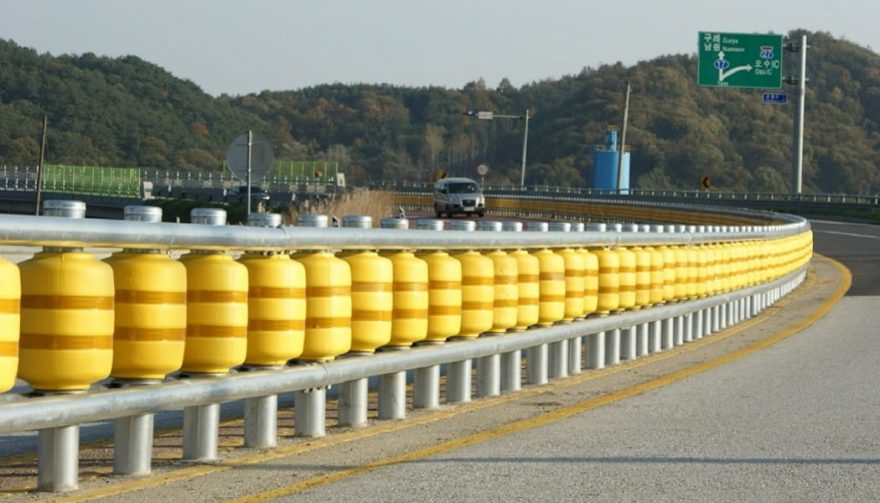
The roller barrier is being tested in parts of southeast Asia.
New Roller Barrier Could Improve Vehicular Safety
Imagine you’re driving on the highway, maybe somewhere like The Tail of the Dragon in Tennessee. As you swoop around the curves in the hillside, your cell phone rings. You won’t answer, but you look at your phone display just long enough to miss the next curve ahead. Your car slams into the highway barrier…
Instead of careening down the steep embankment, you glance off the barrier and come screeching to a halt on the shoulder. You’re safe because of the new roller barrier, designed by KSI in Korea.
What’s a Roller Barrier?
You haven’t seen the roller barrier just yet in America, so you might not know what it is. Highway departments usually use normal galvanized steel guardrails mounted to wood posts embedded deep in the ground. They absorb initial impact and attempt to retain vehicles on the right side of the barrier.
The innovative roller barrier goes a few steps further.
Plastic rollers are mounted between an upper and lower metal rail, both on the inside and outside of the posts. When a vehicle hits the guardrail, it first hits the plastic rollers. These rollers spin, effectively converting shock energy into rotational energy.
On hard impacts, there is a secondary impact that is absorbed by the inner metal rails, minimizing damage and injuries. If the impact is severe enough, the outer rails are a third level of protection, keeping you and your vehicle from plummeting off the edge of the road.
How Effective is the Roller Barrier?
In one word: very. The roller barrier can save lives virtually every time it’s used. Where guardrails might slightly lessen the blunt force trauma in an accident, they are usually just one layer of metal, thus only effective for initial impact. The roller barrier turns catastrophic impact into a glancing blow.
Styles vary as well. KSI manufactures roller barriers with one or two rollers, and a guardrail specifically designed for motorcycles.
Why No Roller Barriers on Our Highways?
It’s all about the money, I’d suspect. Implementing roller barriers would not be an inexpensive proposition to say the least. While the manufacturer boasts that repairs to their roller barriers are less expensive than traditional guardrails, the initial installation cost would be a small fortune.
It would be great to see the roller barrier implemented in key areas where extreme car crashes are notorious. Whether on The Tail of the Dragon, along the Pacific Coast Highway, or other high-traffic, collision-prone areas, it could make a huge difference in vehicle repair costs, health care burdens, and even save lives.
What is the true cost of safety on our highways anyway?





